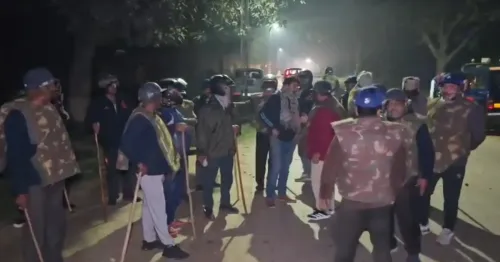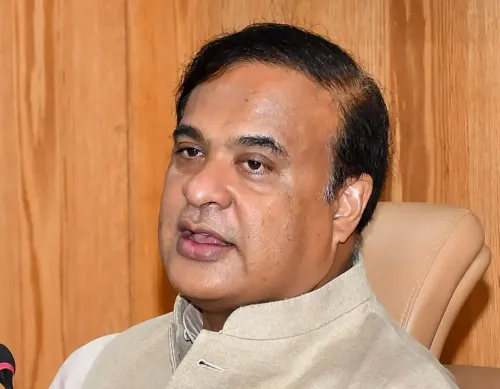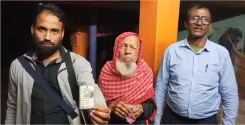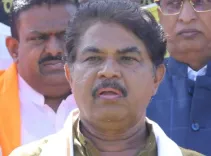Is the Surrender of Bhupathi Indicating the End of Naxalism?

Synopsis
Key Takeaways
- Bhupathi's surrender signals a decline of the Naxalite movement in Maharashtra.
- Government's strict approach is yielding results in the fight against Maoism.
- Development efforts are crucial in shifting local sentiments against insurgents.
- Improved security conditions foster stability and growth in affected regions.
- Coordination among security forces enhances operational success.
New Delhi, Oct 15 (NationPress) The surrender of prominent Maoist leader, Mallojula Venugopal Rao, known as Bhupathi, along with more than 60 of his followers, marks a significant decline of the 'Naxalite' movement, particularly in the Gadchiroli region of Maharashtra. Bhupathi, also referred to as Sonu, Venugopal, Sonu 'dada', Vivek, Master, and Venu, had bounties ranging from Rs 1 crore to Rs 10 crore on his head.
A fierce leader of the Communist Party of India (Maoist), a banned organization in India, he was sought after in Odisha, Telangana, Chhattisgarh, Maharashtra, and Andhra Pradesh. For four decades, he was active in the movement, overseeing operations in the Red Corridor, which includes Chhattisgarh, Telangana, and Maharashtra. Bhupathi was also part of the CPI (Maoist)'s Central Military Commission, orchestrating several significant attacks.
In recent years, he primarily operated in the Gadchiroli area and was implicated in nearly every incident occurring there. The operations he directed were ruthless, resulting in numerous casualties among CRPF, STF, and DRG personnel. Notably, Rao is the sibling of Maoist leader Mallojula Koteshwar Rao, alias Kishenji, who was killed in an encounter in 2011 in West Midnapore district of West Bengal.
Kishenji, who was active in West Bengal, co-founded the People's War Group (PWG) in 1980. He played a crucial role in merging the PWG with the Maoist Communist Centre of India to create the CPI (Maoist).
With Union Home Minister Amit Shah asserting that India would be 'Naxal-free' by March 2026, the surrender of Rao and his associates represents a major development in this regard.
Officials have stated that given the current pace of events, security forces might achieve the target of a Maoist-free India even ahead of the deadline.
The Union Home Minister has urged the insurgents to surrender their arms and reintegrate into society by following the surrender policy enacted by the Modi government.
Several factors contributed to Rao's surrender. Primarily, he recognized that opposing the security forces had become a futile endeavor.
The Union Government's resolve against Maoists has been unwavering, adopting a stringent approach.
Along with a firm stance, the government has also prioritized development in 'Naxalite-affected' regions, fostering a shift in local sentiment against the 'naxalites' who were perceived as impediments to progress.
Alongside development, enhanced communication networks facilitated operations. The construction of roads not only benefitted the community but also assisted security forces in their missions.
Additionally, Bhupathi came to understand that he was being cornered by specialized anti-Maoist forces, such as the C-60 commandos of Maharashtra.
Multi-state forces also conducted successful anti-Naxalite operations in Gadchiroli and Abujhmad, which left Bhupathi feeling trapped and disheartened.
Realizing his situation, Bhupathi recently conveyed to his supporters that surrender was the only viable option. He issued a press release urging the CPI (Maoist) to abandon violence and pursue peace and dialogue with the government.
This would entail laying down arms, which was ultimately rejected, leading to internal discord within their ranks.
A warning was also issued against him by the Central Commission. This may signify the concluding chapter of the Maoist movement in Gadchiroli, once considered one of the most perilous regions in the country. Last year, Bhupathi's spouse, Vimala Chandra Sidam, who had a bounty of Rs 1 crore on her head, surrendered.










